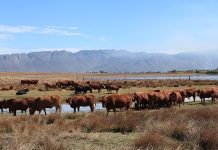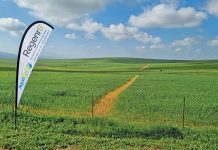Wouter Kriel
South African agriculture has remained static. A hundred years ago, our main export products in descending order were wool, fruit and wine. Today it’s the exact opposite: wine, fruit and wool. Agriculture performed well over the past 10 to 15 years, but there’s no new investment in new agricultural industries. Wine performed well, due to its re-entry into old markets it lost during apartheid, and the same goes for the fruit industry.
These industries perform well when the rand weakens, making their performance reactive and opportunistic. result is that our balance of trade on processed foods turned negative six years ago, as we simply don’t process enough products for the export market. In 2007 our balance of trade on primary agricultural produce also turned negative. Investor confidence is lacking in agriculture, and this can be blamed on government’s agricultural policies. Government is incompetent regarding implementation, and land reform is scaring investors away. Investors are sceptical about the target of 30% agricultural land that must be transformed, and are rightly asking what will happen next.
Various roleplayers in agriculture have requested that businesses achieving a high BEE status should be exempt from land reform. This has been met with strong objection from government. There seems to be a lack of understanding and ability to distinguish between these two policy instruments (land reform and BEE) and their respective objectives in the agricultural sector. The ministers of agriculture and land affairs we’ve seen so far have been junior politicians. One can hope that whoever is given these portfolios in the new government will have political gravitas, reflecting its importance. Social transformation, as conducted according to government policies, has followed the path of least resistance. When targets for housing and sanitation are set, urban areas get all the benefits, as it’s easier to install flush toilets in a suburb than an isolated countryside village.
Equally so with the transformation of agriculture-capable farmers on tracts of high potential land in the former homelands, who are still as impoverished as they were before 1994, with little prospect of growing their businesses. Why are there no mechanisms to support their growth into commercial farming? Why aren’t they targeted as the best candidates to benefit from land reform? I’m convinced most people who’ve supposedly benefited from land reform projects are actually worse off now than they were before. Some innovation did occur in agriculture. The cultivation of table grapes along the Orange River and the expansion of the sugar industry into Mpumalanga, both with substantial investment from the Industrial Development Corporation (IDC), are good examples. But these initiatives are 25 years old, and we need to ask where the new ones are. They won’t be in sugar – it seems over half the land under sugar is subject to land claims, so the industry currently faces extinction.
Our best showcase for innovation must be the maize industry. Since deregulation, maize farmers are producing 10% to 20% more maize on 25% less land. They do this with 33% less fertiliser, half the number of tractors and a quarter of the harvester fleet required back then. Before deregulation the average yield was 1,9t/ha. Today it’s 3t/ha. Deregulation also stopped producers cultivating marginal land, effectively reducing our grain producing area by 2 million hectares but bringing many environmental benefits. South Africa’s middle class is growing, changing consumer spending patterns. While red meat consumption has remained static, poultry consumption has increased sharply.
This industry depends on sunflower and soya beans as protein feed. We import these from Argentina, as local producers can’t produce it as efficiently without sacrificing maize production land. Importing these protein sources is what’s currently distorting our balance of trade, and ways to be more self-sufficient in this regard should be investigated. We need innovation. – Wouter Kriel Contact Prof Nick Vink on (021) 808 4899. |fw








